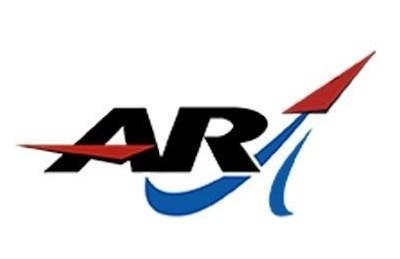Wed, Jun 26, 2019
Green Propellant Infusion Mission (GPIM) Will Demonstrate In Space For The First Time A New Non-Toxic Propellant
Aerojet Rocketdyne, along with NASA, Ball Aerospace and the Air Force Research Laboratory (AFRL), is helping usher in a new era of small satellite propulsion through the Green Propellant Infusion Mission (GPIM). On June 24, a Ball Aerospace small satellite was launched from NASA’s Kennedy Space Center in Cape Canaveral, Florida. The spacecraft will conduct a 13-month demonstration of a revolutionary “green” propellant developed by the AFRL, called AF-M315E.

Powered by this green propellant, Aerojet Rocketdyne’s green propellant propulsion system will enable the spacecraft to execute and demonstrate orbital maneuvers in space. The system includes five 1-newton thrusters: four for attitude control and one for orbit maneuvering. This will be the first space-based demonstration of Aerojet Rocketdyne’s green propulsion technology utilizing AF-M315E propellant.
“Aerojet Rocketdyne has provided trusted and reliable in-space propulsion to industry, government and commercial partners since the beginning of the space age,” said Eileen Drake, CEO and president of Aerojet Rocketdyne. “We’re excited to expand upon this legacy with our new green propulsion technology, which will enable increased satellite performance and provide propulsion options to SmallSats that previously weren’t available.”
AF-M315E is a higher performance and environmentally-friendly alternative for chemical propulsion operations that traditionally use hydrazine. Because of its increased density and higher performance, satellites can achieve extended operation timelines and increased maneuverability. Its lower freezing point eliminates the need for added onboard heating systems, resulting in a greater mass allowance for added life. Green propellant is also non-toxic, which enables safe handling of the propellant and simplifies pre-launch processing.
NASA is interested in using green propellant for various next-generation spacecraft and launch vehicles to the Moon, Mars and beyond. Proving this new technology is effective and efficient in space will open the door for green propulsion to become a viable option for future missions. Aerojet Rocketdyne’s green propellant propulsion system was developed at the company’s Redmond, Washington, facility.
(Source: Aerojet Rocketdyne news release)
More News
From 2016 (YouTube Edition): The Canadian Forces Snowbirds Can Best Be Described As ‘Elegant’… EAA AirVenture 2016 was a great show and, in no small part, it was>[...]
Airplane Lunged Forward When It Was Stuck From Behind By A Tug That Was Towing An Unoccupied Airliner Analysis: At the conclusion of the air taxi flight, the flight crew were taxii>[...]
Aero Linx: International Stinson Club So you want to buy a Stinson. Well the Stinson is a GREAT value aircraft. The goal of the International Stinson Club is to preserve informatio>[...]
Request Full Route Clearance Used by pilots to request that the entire route of flight be read verbatim in an ATC clearance. Such request should be made to preclude receiving an AT>[...]
"Today's battlefield is adapting rapidly. By teaching our soldiers to understand how drones work and are built, we are giving them the skills to think creatively and apply emerging>[...]
 Classic Aero-TV: Pure Aerial Precision - The Snowbirds at AirVenture 2016
Classic Aero-TV: Pure Aerial Precision - The Snowbirds at AirVenture 2016 NTSB Final Report: Costruzioni Aeronautiche Tecna P2012 Traveller
NTSB Final Report: Costruzioni Aeronautiche Tecna P2012 Traveller ANN's Daily Aero-Linx (11.23.25)
ANN's Daily Aero-Linx (11.23.25) ANN's Daily Aero-Term (11.23.25): Request Full Route Clearance
ANN's Daily Aero-Term (11.23.25): Request Full Route Clearance Aero-News: Quote of the Day (11.23.25)
Aero-News: Quote of the Day (11.23.25)



